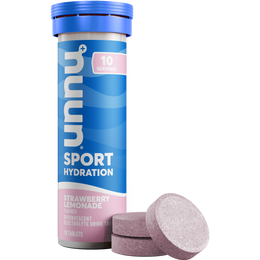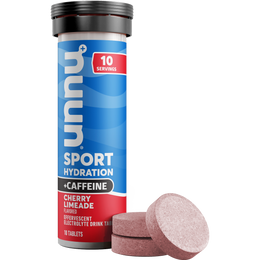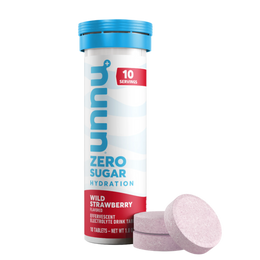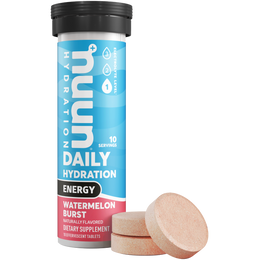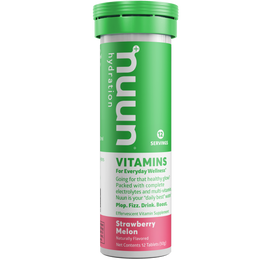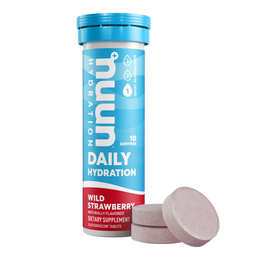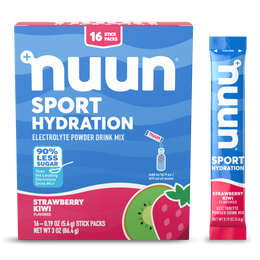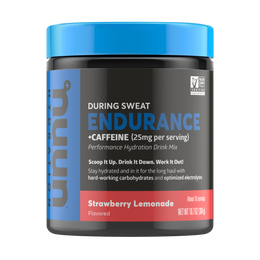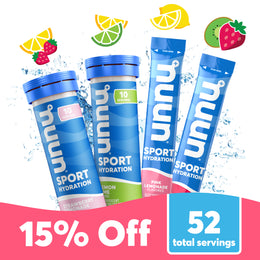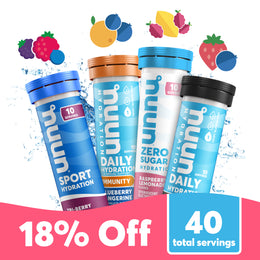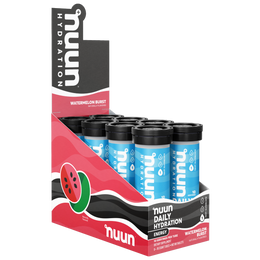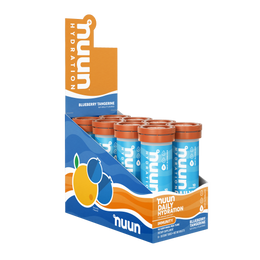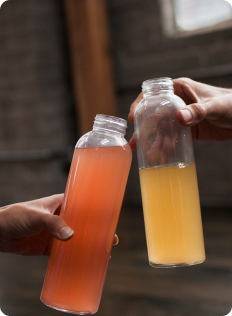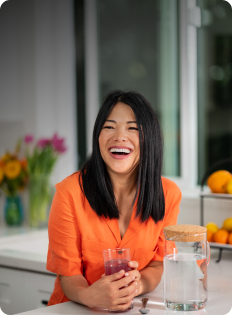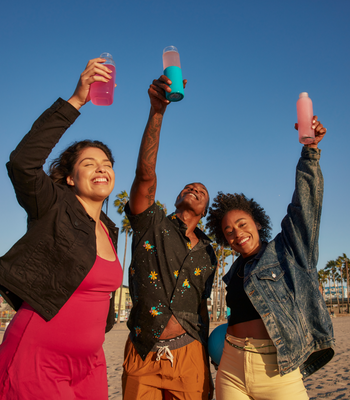Summer is here, and for many people, that means it’s time to get outside — whether you’re going for a run on the beach, working on your garden, or playing on a recreational sports league. However, it’s important to remember that rigorous outdoor activity in the summer heat can lead to a condition called heat exhaustion.
To continue outside activities safely this summer, you should be able to recognize the signs of heat exhaustion, as well as understand methods for recovery if your time in the sun gets the best of you. Below, we cover everything you need to know.
What is Heat Exhaustion?
Heat exhaustion occurs when a person stays in the heat without taking in enough fluid. As the body loses an excessive amount of water and salt through sweat, the body’s natural cooling processes can’t work properly.[1] If left untreated, conditions can worsen and lead to heat stroke.
Heat Exhaustion Signs and Symptoms
To recognize the signs of heat exhaustion, you must first understand the difference between heat exhaustion vs. heat stroke. Heat exhaustion is a milder heat-related illness, but it can develop into heat stroke if a person continues activity in the heat while experiencing heat exhaustion symptoms. Heat stroke is a very serious heat-related illness where the body is unable to cool itself off or regulate its temperature. When heat stroke occurs, a person’s body temperature may rise above 105 degrees in a matter if minutes and can cause permanent disability or death if not treated.
By recognizing and treating symptoms and signs of heat exhaustion immediately, you have a much better chance of recovering without worsening your condition.
BE ON THE LOOKOUT FOR THESE SIGNS OF HEAT EXHAUSTION
|
Above normal |
Headache |
Nausea |
Vomiting |
|
Muscle |
Fatigue |
Heavy |
Cold, pale, |
|
Fast, weak |
Dizziness |
Fainting, |
Thirst |
How to Prevent Heat Exhaustion
Your first line of defense in preventing heat exhaustion is to take extra precautions when participating in outdoor activities in elevated temperatures. You can and should continue to enjoy outdoor activities during the summer, as long as you prepare diligently. The following actions can help you to be proactive before a long day in the heat.
1. Hydrate Before Outdoor Activities
In a nationwide survey, nearly 50% of respondents reported that when they plan to work or exercise outside, they focus on hydrating during that outdoor activity, while only about 26% reported hydrating beforehand.
To mitigate the risk of heat exhaustion, hydration should start well before you step outside. If you are already dehydrated when you begin working or exercising outside, you may not be able to catch up with your body’s hydration needs.
How do you know if you’re hydrated enough before you go outside? In our research, nearly 44% of survey respondents said they rely on their level of thirst. Unfortunately, thirst is not a reliable measure of hydration. Studies show that the thirst sensation is triggered when the body is already 1-2% dehydrated, and at that level, your physical and cognitive performance may already be in decline.
How to Accurately Assess Your Hydration
Urine color: An easy way to monitor your hydration level is to assess your urine color. Light yellow — like lemonade — indicates optimal hydration, while darker shades of amber to burnt orange could indicate dehydration.
Bathroom frequency: You should be emptying your bladder, on average, about 5-8 times per day. If you notice that you’re using the restroom less frequently than average, it’s time to drink up.
2. Hydrate During Outside Activity
Hydration should continue during your outdoor activity or exercise. You must replace the water you lose while sweating, as this is what allows your body’s natural cooling processes to function properly.
As temperatures rise, your body will begin losing water at a faster rate. On average, water loss through respiration and sweat (also referred to as insensible fluid loss) amounts to about 450 mL per day. However, during vigorous activity in a hot environment, it is possible to lose more than 3 liters per hour. A hot climate can make a vast difference in water loss, so it’s critical that you diligently replace those fluids, even if you’re not exercising or otherwise exerting yourself. The Centers for Disease Control and Prevention (CDC) recommends drinking 8 ounces of water every 15-20 minutes when working in the heat.
However, heavy sweating can also result in a loss of your body’s salts and minerals. While nearly 80% of respondents in a nationwide survey said they drink mainly water to hydrate, higher temperatures often necessitate the intake of other beverages that can help replace the salts and minerals that are lost during heavy sweating. Studies have found that the best beverages for rehydrating include carbohydrates or fat (to slow gastric emptying), as well as sodium, potassium and magnesium, which help promote water retention.
3. Get Enough Sleep
Research has found that sleep deprivation may decrease your rate of sweating. When your body can’t sweat properly, it cannot cool itself properly — and that may lead to heat exhaustion. By practicing good sleep hygiene and getting the recommended amount of sleep each night (7 or more hours per night), you can help your body better regulate its temperature and mitigate your risk.
4. Avoid Strenuous Activity During the Hottest Part of the Day
Typically, the hottest part of the day occurs between 10 am and 4 pm. While it’s best to avoid strenuous activity during those hours and concentrate your time outdoors to the early morning or evenings, that’s not always possible. According to our research, about 43% of survey respondents exercise or work outdoors during the hottest hours of the day 1-3 times per week, and 36% participate in outdoors activities 4-7 times per week.
In those cases, make sure to take breaks when possible, preferably in a cool or shaded place.
5. Wear Loose-Fitting, Lightweight Clothing
When choosing clothing for outdoor activities, opt for loose, lightweight clothing. Clothing that is too tight can restrict your body’s ability to cool itself. When possible, choose moisture-wicking fabrics, which can help your sweat evaporate quickly and keep your body temperature from getting too high.
Heat Exhaustion Recovery
If you suspect you are experiencing heat exhaustion, it is important to take action immediately so it doesn’t progress to heat stroke. At the first sign of symptoms, these actions can help with recovery:
- Hydrate
- Take a cool bath or put a cool, wet washcloth on your body
- Loosen your clothes
- Get out of the heat and move to a cool place
If your symptoms persist for longer than an hour or worsen, it’s important to seek medical help.
The summer is a great time to get outside — as long as you take the proper precautions to make sure you stay hydrated and maintain a normal body temperature. With the right preparation and attention to signs of too much heat & sun exposure, you can safely enjoy outdoor activities.
Don’t let the summer sun keep you from your hydration goals. Satisfy your sweet tooth and stave off heat exhaustion with Nuun Sport Seasonal Flavors like peach! Blend them into creative smoothies and soft serve to stay hydrated and cool all summer long. Or try Nuun Sport’s core flavors like strawberry lemonade and watermelon for a delicious blend of hydration and electrolytes for on-the-go hydration you can feel.
